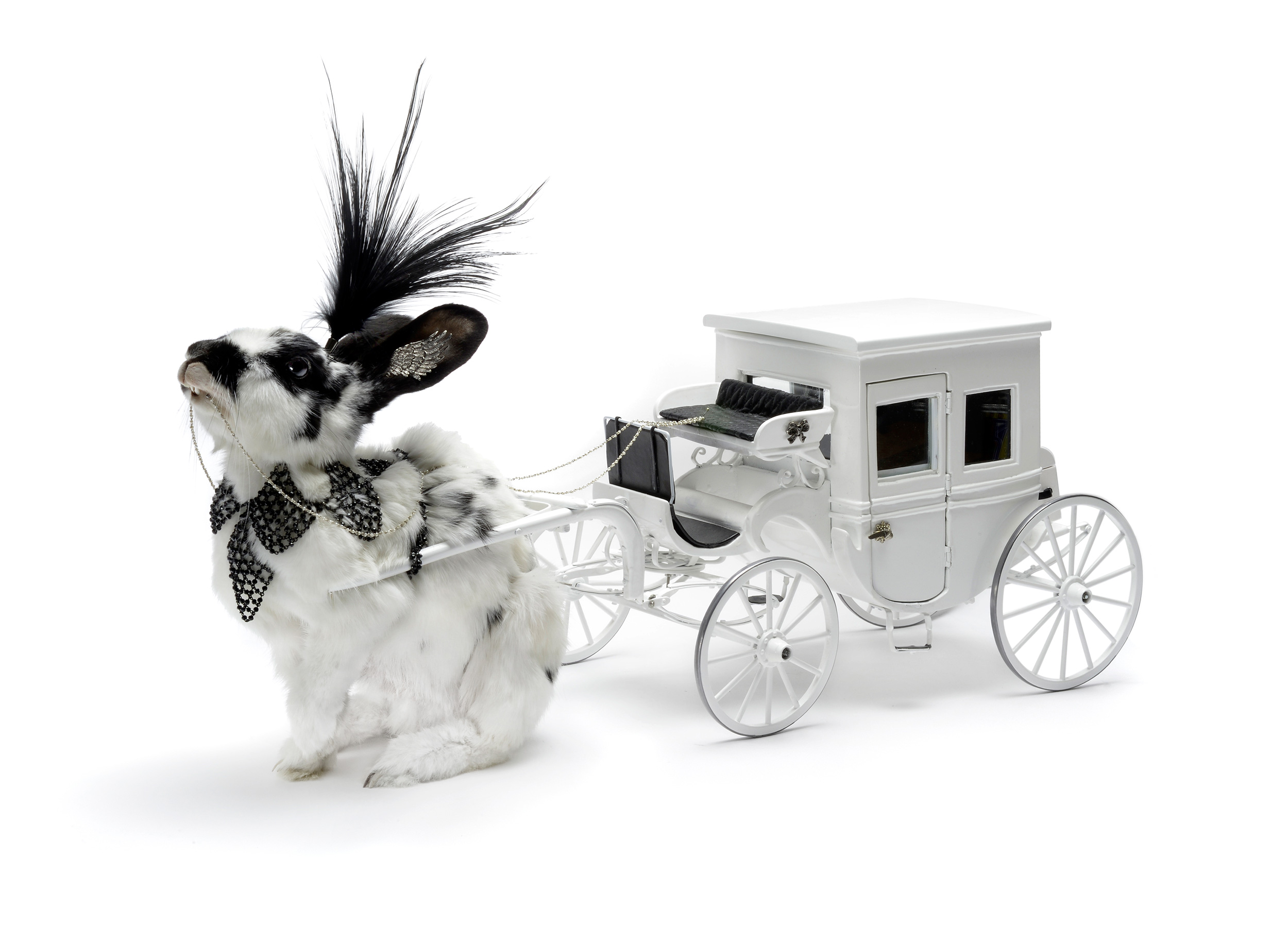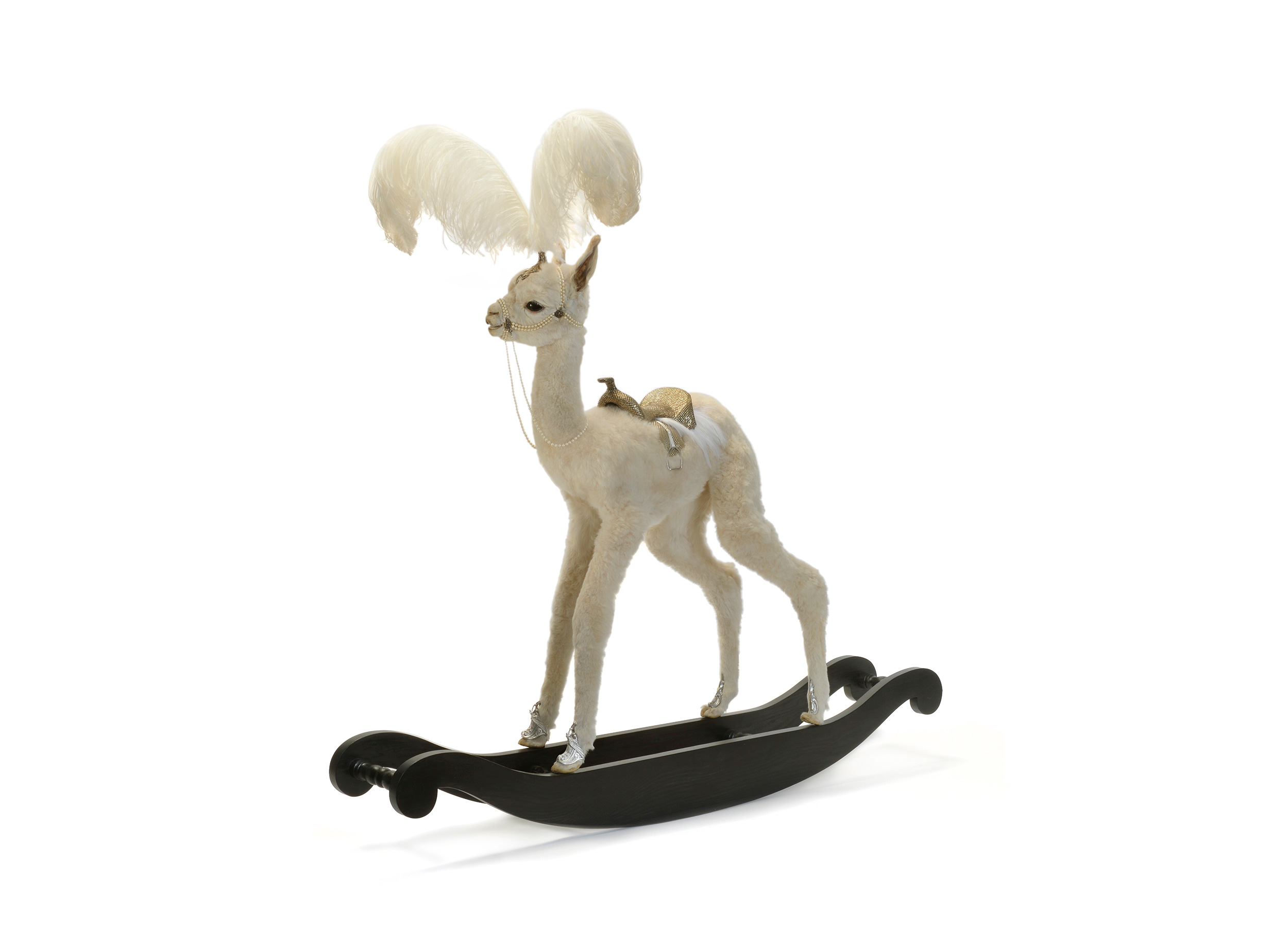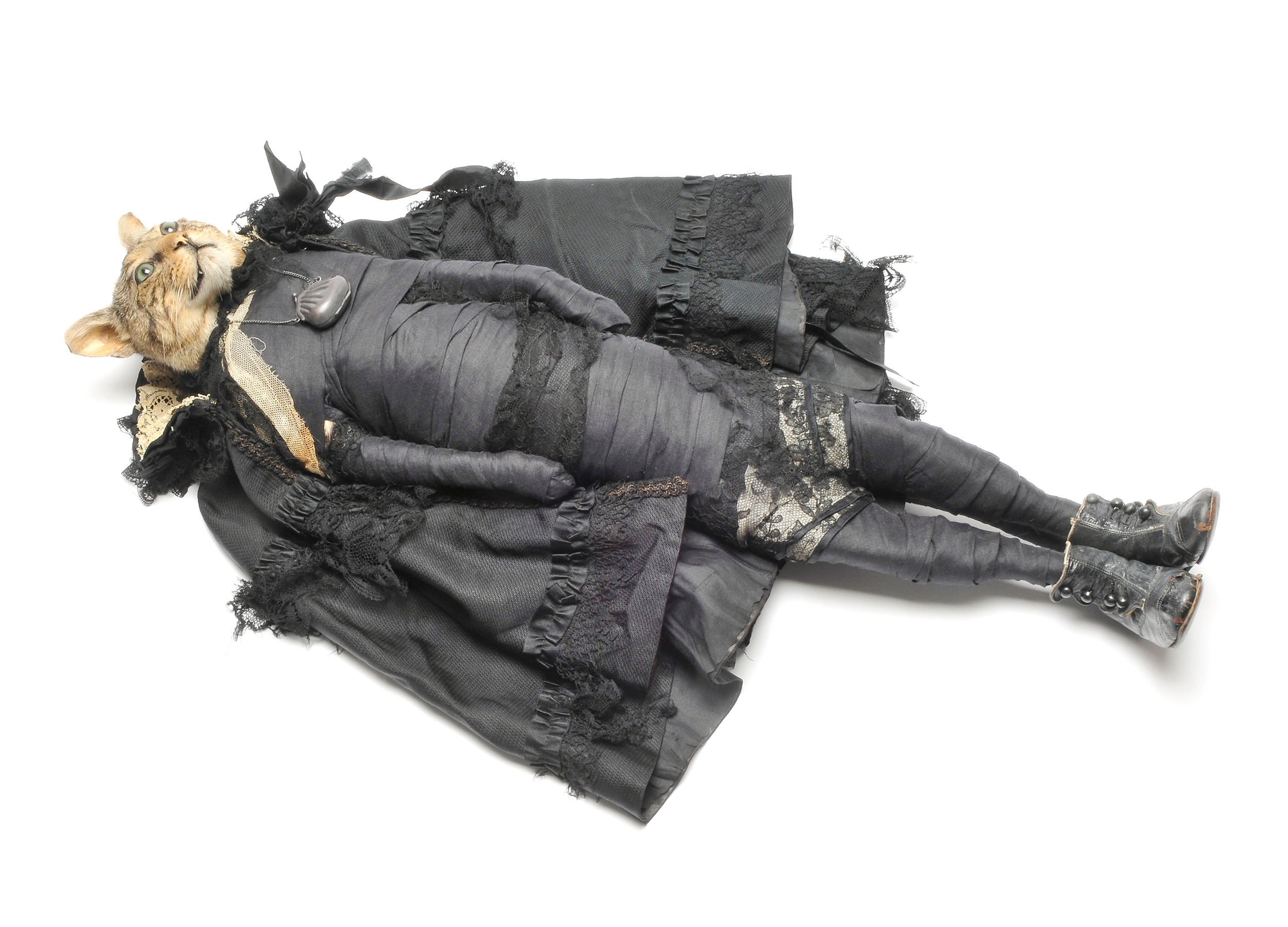Death and Adornment: Julia deVille

Taxidermy artist and jeweller Julia deVille finds beauty in places many would consider morbid. Her interest in taxidermy was piqued “the moment I discovered it was something you could ‘do’.” As a teenager, deVille “proudly displayed” on her bedroom wall an eight point stag head mount, acquired from an antique shop. Trying to find a taxidermy mentor at around age 16, however, she found “no one would take me seriously.”
Growing up in Wellington, New Zealand before making the move to Melbourne, Australia, deVille tried on a number of creative endeavours for size — including fashion design and shoemaking — before discovering jewellery. From there, one aspect of her path was set: she recalls, “I knew on the first day of my first class that I wanted to make jewellery for the rest of my life.”
Fortunately, deVille’s shift to Melbourne also brought a meeting with a retired taxidermist, who offered to ‘show her the ropes’. Learning both skills — jewellery and taxidermy — alongside one another, their integration came naturally. Birds and mice — found dead locally — “lent themselves well to the scale of jewellery,” deVille recalls. “I would add little diamonds for eyes and give the mice silver tails, and it just grew from there.”

The two practices “feed into each other in a very intimate way.” DeVille “will often make a decoration for an animal and realise that it would make a great necklace, and vice versa.” Further, the addition of jewellery materials to her animals “is a question of preciousness: what do we value? Most people consider diamonds and gold precious, but for me the life of the animal is far more valuable,” deVille explains.
There is a strong ethical dimension to the work: deVille follows a vegan lifestyle, and only uses animals that have died of natural causes. In demonstrating animals’ beauty, she hopes to allow people to get “in touch with their true loving nature — where they do not want to cause harm to other sentient beings.” Rather than taking a didactic approach, however, deVille explains that the goal is to help people “make educated decisions that are aligned with their true beliefs and values.”
Some of the pieces are quite direct about the way animals are utilised by humans — being mounted as trophies, served up on a platter, or hitched to a cart — while others draw more on the imagination. DeVille takes inspiration from ancient myth, particularly tales of the underworld, with her innocent-looking, saddled creatures referencing the non-judgemental ferrymen who take souls to Hades.

The Victorian sensibility also comes strongly into play. The artist notes, “I just love the Victorians. What a bunch of kooks! I love their aesthetic, their almost fashionable acceptance of death and the bizarre contradictions in the way they lived their lives.” Though the era’s penchant for the hunting of endangered species for sport and trophies does not resonate with deVille’s personal values quite so much, even this “is all part of their eccentric charm in a funny sort of way.”
Of the discomfort her work can generate in this day and age, deVille reflects, “death is taboo in our society unfortunately.” Having been “lucky” to be raised in a family that faced death head-on, deVille learned “a valuable lesson about death at a very young age… so death is not confronting to me. It is beautiful and quiet.” As such, she says, “I want to lovingly show people the softness of death.”
In addition to facing mortality in a general sense, deVille suggests that “people are also confronted by seeing the animals that they eat, in full form before them, instead of… neat little cuts on polystyrene trays.” Regardless, the controversy that her work can cause as a result of raising such issues has been “highly beneficial,” with the attention that it generates providing deVille “more opportunities to speak about my beliefs and philosophies.”

The work has obviously struck a chord, with deVille scooping up a number of grants and awards over the past decade, and her pieces are now held in prestigious public and private collections, both within Australia and internationally. She is represented by Sophie Gannon Gallery in Melbourne, and Jan Murphy Gallery in Sydney.
In relation to the notion of the ‘wild’, deVille reflects that, “in a literal sense, taxidermy is taming something wild.” It means we are able to “get up close and personal” with creatures we may not be able to approach in everyday life — or at least not in the same way. However, she notes, “as with the taming of anything wild, something is always lost. Taxidermy can only ever be a shadow of the beauty that is a living creature. You cannot capture the essence of life, except by its blindingly obvious absence.”
Her concerns also have an ecological basis as, on a grand scale, “our society has become masters of taming the wild for personal gain, often with little awareness of what we are meddling with.” DeVille argues that the consequences of the “collective atrocities” being perpetrated today go “far beyond our comprehension.” Fortunately, we have the artwork of Julia deVille to shine a light on the small losses, so we might contemplate the larger ones as well.
